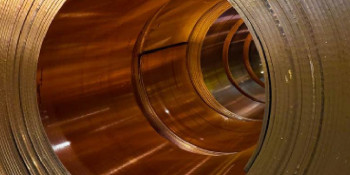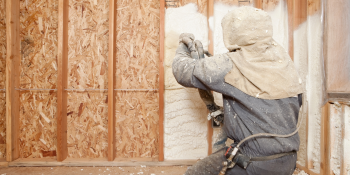Q&A Forums
Flash & Batt Post New Topic | Post Reply
| Author | Comments |
|---|---|
|
JohnPeters
Posted: Jun 01, 2009 07:50 PM
|
Flash & Batt
I have seen previous posts regarding this topic. I was hoping to dig a little deeper into this issue as there has been a recent competitor that has moved into my area that is pushing the flash and batt systems like its no one's business.On paper and theoretically, I can see how this flash and batt system can be an inexpensive way to reach state mandated R-values while securing low air exchanges. Something about placing a dirty, stinky cough inducing FG batt over beautiful, fluffy foam does not sit well with me. Are there any studies to substantiate the flash and batt system as being as good as a full foam cavity fill? Are there any studies / data to show potential problems that can stem from insulating this way (ie. mold, moisture, etc)? I would imagine that putting a kraft faced batt over a couple of inches of foam could induce moisture issues. Do these flash and batt installation companies use kraft faced or non-kraft faced? Any flash and batt advocates out there? I would love to hear from you on this topic. We don't offer fiberglass at my company. The known carcinogens and the fact that an FG batt is virtually a petri-dish for mold are the reasons we stay away. I have yet to pull a batt out of a wall cavity that does not have mold on it - and i live in the North East. I can only imagine the issues FG can pose in high humidity areas of the country. jp |
|
mason
Posted: Jun 02, 2009 07:50 AM
|
Traditional insulation companies such as Guardian Building Products, Certainteed and even Owens Corning Fiberglass are offering hybrid foam and fiberglass or cellulose insulation systems. The systems are also being offered by many of our traditional SPF suppliers such as BASF, NCFI and others. The systems will provide an effective air barrier which will make the fiberglass (or cellulose) work more efficiently and in most areas of the country can be installed without a significant concern for condensation problems. However in northern climates, vapor retarders are needed to prevent potential condensation on the foam (if it is installed less than 2-3 inches). As we have discussed in other forums it is important that the vapor retarder element (sheet plastic, kraft faced paper, etc) be installed correctly in order to minimize the potential for condensation. I did some websearching on performance of the systems and came up with a few webpages that I can share with you. This is by no means the only information in cyberspace but will give you an idea on the popularity and marketing of these systems. Based on what I read, the hybrid systems are here to stay and will be become very popular with consumers. Here are some webpages that address those issues. The first is from Guardian who used R&D Services to perform WUFI simulations to determine where and when to use vapor retarders. They recommend kraft faced fiberglass in heating climates along with the closed cell foam. www.guardianbp.com/docs/ATS.pdf. The second is from Owens Corning www.ocenergycomplete.com/contractors/. While they don't specifically mention SPF, they do mention sprayfoam and have another webpage that discusses the relative energy savings associated with air sealing homes with hybrid systems www.ocenergycomplete.com/Resources/faq.aspx#installation. Next we go to the PATH Tool Box which uses data and information from DOE and is administered by the National Association of Home Builders Research Center. www.toolbase.org/pdf/techinv/insulationalternatives_techspec.pdf It shows a cost comparison between different types of insulation and a short discussion on hybrid systems. |
|
JohnPeters
Posted: Jun 03, 2009 10:06 PM
|
Thanks for the response. I checked out a couple of the links that you had listed. Two of them talked about DIY SPF kits. I don't know that I am an advocate of these devices. Apparently you are...? However, making foam more marketable and more accessible for "joe six pack" may prove beneficial for the industry. None of the links portrayed any conclusive information about this application technique. I am still on the fence. Who wants nano sized particles of glass stuck in their lungs and skin? Not me. |
|
mason
Posted: Jun 04, 2009 07:39 AM
|
I do not promote any product or services. You misunderstand the comments I made and the links I provided. I was only showing what was being sold, not that I was promoting the practice. I am not a proponent of do it yourself foaming. I believe you need significant training and education to spray foam. |
|
Posted: Jun 05, 2009 06:29 AM
|
,,,and i believe that the froth pak system is a compromise,,,it is not a high pressure expanding foam system,,,it is a prefrothed low pressure system,,,so you are pretty much adding additional r value,,and not much more at that per inch...you are not getting the expansion into the minute cracks and penetrations inherent to the building proccess,,you are not forming an effective air barrier,,you are not gaining much for structural integrity,,, for less money,,,less mess,,and more r you could just as well cut boardstock and caulk the seems,,, now at last years big local home show the filterglass peeps that do not have a real foam rig arranged to spray a wall in the "energy effiecient" demo home,,,it looked like,,well froth pak foam,,,and im sure turned off many tradesmen who looked at the irregurlar profile,,the grainy,,,cold applied foam,,,(yes they had the "heated hose pak),,,(der hose heat is to maintain,,not to make,,,der ding)and it was just a piece of crap application that did the "flash and batt" crews no good,,,, was a great marketing tool to turn of the intrest in the foam building envelope system.... so how can those foil folks sell performance value and the foam folks cant...i mean,,the more foam behind the foil the higher its effective r value,,,common man,,,where the heck is the spfa?? |
|
mason
Posted: Jun 05, 2009 08:16 AM
|
Foamdude,I actually have a lot of experience with the pressurized bottle sprayfoam systems. While working at Carpenter Insulation in the 80s I set up many a bottle system in manufacturing plants. At that time, the foam had to be pressurized at 250 psi with a temperature around 100 degrees F Some of it could be sprayed through a Gusmer D gun and made very good foam with physical properties similar to proportioned foam. You can also effectively seal cracks and crevices with the foam (although as you pointed out the foam has shorter cream time and will not flow as much as the proportioned foam.) However, a plant's environment can be controlled much better than the outside world, so while the equipment is fairly simple, the foam is more complex. The key is making sure the foam is the right temperature. And the applicator needs to know all of the basic information that any sprayfoam applicator has to have. The companies that are selling the pressurized bottle systems are providing instruction to the applicators, as with all sprayfoam suppliers, some instruction is more complete than others. So as with any supplier, get references, check them out, ask them what type of training was supplied and how they responded to technical problems in the field. Talk to their technical folks to see how responsive and knowledgeable they are. Remember also that the equipment is typically matched with a specific supplier, so if you go with the bottle systems you typically are not able to try mix and match material suppliers as easily as you can with the proportioned foam. |
|
JohnPeters
Posted: Jun 06, 2009 11:33 AM
|
This post got off track hey? |
|
Posted: Jun 06, 2009 07:13 PM
|
hijack 101 lol,,,, yes mason with decent pressure and consistent heat this system will work well,,, but,,,, |
|
mason
Posted: Jun 06, 2009 08:24 PM
|
Foamdude, My thoughts exactly |
|
Mister
Posted: Jan 21, 2016 01:43 AM
|
Flash and batt is an interesting system that I've spent a lot of time contemplating. After much thought and trying a few things in the field, I've arrived at the following conclusions. Consider them for what they are worth and make your own decision. *It's silly to have two different crews scale the entire house to save someone a few cents a foot when one guy can insulate the house the first time with one product. *Flash and batt is not really much cheaper than just foaming the house. *If you don't install at least 1.5" of foam within the cavity, It may not provide the thermal break necessary to prevent condensation within the cavity in cold climates. I think 2" is a better minimum thickness of closed cell foam. At That point, why not foam the whole house. *fiberglass performs to it's specified R value when it is installed in a similar environment to which it is tested. Closed in on all sides with no air infiltration, at 70 degrees or so. Picture framing the cavities can produce that result, in the spring time. There is still air movement within the fiberglass in the form of a convection loop during hot and cold seasons, however, measuring the value of picture framing is hard to quantify. *Even with a quick flash of foam, a convection loop and air movement are likely to still exist within the fiberglass assembly. Best that you have a clean break from the interior and exterior conditions, lest problems occur. *In summary, I believe the flash and batt method to be a lot of work. Only in situations where a sufficient amount of foam is installed in the "flash" portion of the system is this viable. Otherwise, it is two mobilizations with 2 different crews that can be done with one crew and product. I think it's unnecessary. As with anything, there is always a place for some things, but I turn away flash and batt requests. |




























